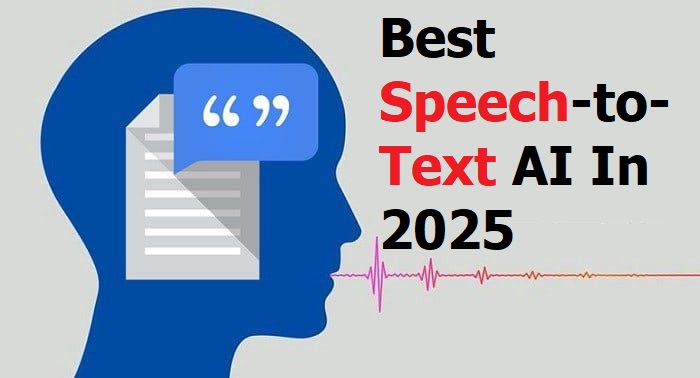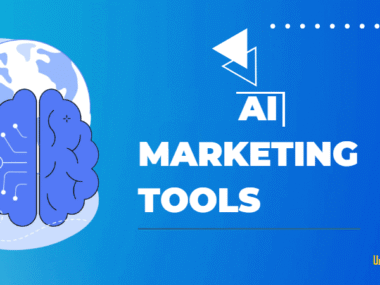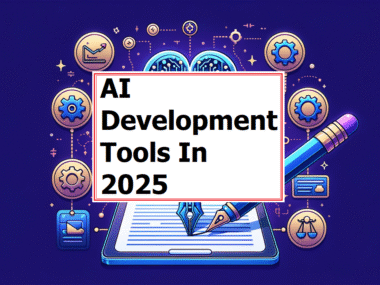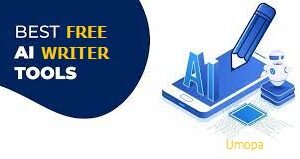Speech-to-text technology has advanced significantly in recent years, with artificial intelligence (AI) playing a pivotal role in enhancing accuracy, speed, and usability. Speech to text AI is now widely used across various industries, from transcription services and customer support to content creation and accessibility tools. These technologies enable the conversion of spoken words into written text, improving productivity and accessibility.
In this article, we’ll explore the top speech to text AI tools available today, how they work, their applications, and how businesses and individuals can leverage them for various use cases. Whether you’re a content creator, developer, or business professional, understanding speech to text AI can help you tap into new opportunities for efficiency and growth.
Table of Contents
- What is Speech to Text AI?
- Why is Speech to Text AI Important?
- Top Speech to Text AI Tools
- Google Speech-to-Text
- IBM Watson Speech to Text
- Microsoft Azure Speech to Text
- Rev
- Otter.ai
- Sonix
- Speechmatics
- Trint
- Descript
- Temi
- Applications of Speech to Text AI
- How Speech to Text AI is Shaping Industries
- Conclusion
What is Speech to Text AI?
Speech to text AI (also known as automatic speech recognition or ASR) is a technology that converts spoken language into written text using machine learning and natural language processing algorithms. The AI models are trained on vast datasets of audio recordings to understand and transcribe spoken words into text accurately.
The technology works by recognizing the sounds of words (phonemes) and matching them to a vast vocabulary. Modern speech to text AI systems leverage deep learning models to improve accuracy over time, even understanding nuances like accents, background noise, and context-specific language.
Speech-to-text AI has evolved to the point where it can transcribe speech in real-time with high accuracy, making it a valuable tool for transcription, customer service automation, content creation, and more.
Why is Speech to Text AI Important?
Speech to text AI has become a game-changer in various industries due to its multiple benefits. Here are some key reasons why it is so important:
1. Improved Productivity
- Speech-to-text AI eliminates the need for manual transcription, saving time and improving productivity. Professionals can focus on higher-value tasks, such as analyzing data or creating content, rather than transcribing audio.
2. Enhanced Accessibility
- Speech-to-text technology makes content more accessible to individuals with hearing impairments, providing real-time captions and transcriptions. This is particularly important in sectors like education, healthcare, and media.
3. Cost-Effective
- Traditional transcription services can be expensive and time-consuming. Speech-to-text AI reduces the need for human transcriptionists, offering a cost-effective solution for businesses and individuals.
4. Real-Time Application
- Many speech to text AI systems can process audio in real time, making them ideal for live events, conferences, meetings, and customer support, where instant text conversion is crucial.
5. Better Accuracy
- With continuous advancements in deep learning and neural networks, speech-to-text AI tools have become increasingly accurate, able to handle complex sentences, multiple speakers, and various languages.
Top Speech to Text AI Tools
Here’s a list of the best speech to text AI tools currently available. These tools have revolutionized industries by providing efficient, scalable, and accurate transcription services:
1. Google Speech-to-Text
Google Speech-to-Text is a cloud-based AI service provided by Google that converts audio into text. It supports a wide range of languages and is used by developers, businesses, and content creators to integrate speech recognition into their applications.
Key Features:
- Real-time transcription support.
- Supports over 120 languages.
- Integration with Google Cloud services.
- Can transcribe audio from video files.
Why Use It:
- Google’s Speech-to-Text offers great scalability and integration options, making it an excellent choice for businesses and developers.
2. IBM Watson Speech to Text
IBM Watson Speech to Text is part of IBM’s suite of AI services and provides highly accurate speech recognition capabilities. It supports multiple languages and can transcribe audio in real time or from pre-recorded files.
Key Features:
- Customizable models for industry-specific use cases.
- Speaker diarization for identifying different speakers.
- Real-time and batch transcription.
- Strong data privacy and security protocols.
Why Use It:
- IBM Watson offers a powerful, secure, and customizable solution, making it ideal for enterprises looking for high-quality transcription services.
3. Microsoft Azure Speech to Text
Microsoft Azure Speech to Text is a cloud-based service that provides speech recognition and transcription tools as part of the Azure Cognitive Services suite. It offers flexible options for real-time transcription and batch processing.
Key Features:
- Real-time transcription with low latency.
- Custom models and language models for industry-specific terms.
- Supports noisy environments and multiple accents.
- Seamless integration with other Azure services.
Why Use It:
- Ideal for enterprises and developers using Microsoft Azure for other cloud-based services, with strong integration capabilities and advanced AI features.
4. Rev
Rev is a leading transcription service that combines both AI and human expertise for high-quality transcriptions. Rev’s automated speech recognition (ASR) system is fast and accurate, and it also provides human editors for higher accuracy.
Key Features:
- AI-powered transcription with human editing for accuracy.
- Supports audio and video transcription.
- Real-time transcription for meetings and podcasts.
- Affordable pricing with quick turnaround times.
Why Use It:
- Rev is great for those looking for a mix of automation and human oversight, ensuring high accuracy in transcription.
5. Otter.ai
Otter.ai is a popular AI tool known for its accurate transcription of meetings, interviews, and lectures. It offers real-time transcription and allows users to search and share their transcripts easily.
Key Features:
- Real-time transcription and collaboration features.
- Integrates with Zoom for automatic meeting transcription.
- Searchable transcripts with keywords and timestamps.
- Customizable speaker labels.
Why Use It:
- Otter.ai is perfect for businesses and individuals needing accurate, real-time transcription with collaboration features.
6. Sonix
Sonix is an AI-powered transcription tool that is known for its speed and accuracy. It automatically converts audio and video files into text and offers easy-to-use editing tools to refine the transcripts.
Key Features:
- Fast, automated transcription with multiple language support.
- Editing tools for reviewing and refining transcriptions.
- Searchable and time-coded transcripts.
- Integrates with other software like Dropbox and Zoom.
Why Use It:
- Sonix is an excellent choice for content creators and businesses who need quick and accurate transcriptions with an intuitive editing interface.
7. Speechmatics
Speechmatics provides speech-to-text software for enterprises and developers. Its machine learning-powered platform supports various languages and provides highly accurate transcriptions, even in noisy environments.
Key Features:
- High accuracy in diverse languages and accents.
- Real-time transcription and batch processing.
- Customizable language models for specific domains.
- Scalable for enterprise-level applications.
Why Use It:
- Speechmatics is suitable for businesses with global operations and industries requiring multilingual transcription services.
8. Trint
Trint is an AI-powered transcription tool that uses machine learning to generate accurate transcriptions from audio and video. It also features a user-friendly editor for refining transcriptions and extracting insights.
Key Features:
- Transcription and translation services.
- Built-in editor for reviewing and editing transcripts.
- Collaboration features for teams.
- Integrates with other tools like Adobe Premiere Pro.
Why Use It:
- Trint’s advanced features make it ideal for journalists, video producers, and content creators who need fast and accurate transcriptions.
9. Descript
Descript is an AI-powered transcription and audio editing tool. It allows users to transcribe audio and video content and edit the text, making it a powerful tool for podcast creators, video producers, and marketers.
Key Features:
- Real-time transcription and automatic editing.
- Video editing capabilities based on text transcriptions.
- Multi-voice transcription and speaker identification.
- Integration with video and audio platforms.
Why Use It:
- Descript is ideal for content creators looking to transcribe, edit, and enhance their media all within one platform.
10. Temi
Temi is an affordable, AI-powered transcription service that provides fast and accurate transcription. It’s suitable for users who need high-quality transcriptions without the cost of human editors.
Key Features:
- Automated transcription with high accuracy.
- Supports both audio and video files.
- Affordable pricing with quick turnaround.
- Easy-to-use platform for editing and downloading transcripts.
Why Use It:
- Temi is perfect for individuals and small businesses that need fast and cost-effective transcription services.
Applications of Speech to Text AI
Speech to text AI tools have a wide range of applications across various industries. Here are some of the key use cases:
1. Transcription Services
- Converting audio files from meetings, interviews, and conferences into written text for documentation or analysis.
2. Customer Support
- Speech to text AI can be used to transcribe customer calls and support chats, helping businesses improve service quality and identify areas for improvement.
3. Content Creation
- Podcasters, YouTubers, and journalists use AI-powered transcription tools to generate content, improve SEO, and repurpose audio or video content into articles or blogs.
4. Healthcare
- Medical professionals use speech to text AI to document patient records, transcribe dictations, and improve the efficiency of administrative tasks.
5. Education
- AI transcription tools assist with lecture transcription, making educational content more accessible and allowing students to review lectures in text form.
How Speech to Text AI is Shaping Industries
Speech to text AI is transforming various industries by enabling faster, more efficient processes and improving accessibility. Here’s how it’s reshaping the landscape:
1. Improved Productivity
- AI transcription tools save time, allowing businesses to focus on more strategic tasks by automating the transcription process.
2. Enhanced Accessibility
- Speech to text AI helps make content more accessible, especially for individuals with hearing impairments or those who prefer text-based content.
3. Better Customer Insights
- By transcribing customer feedback and interactions, businesses can extract valuable insights and enhance customer satisfaction.
4. Streamlined Operations
- AI transcription tools improve operational efficiency by automating manual tasks, allowing employees to focus on higher-value activities.
Conclusion
Speech to text AI tools are revolutionizing the way we work, communicate, and interact with content. From transcription and customer support to content creation and accessibility, these tools offer immense value across industries. Whether you are a business, content creator, or developer, integrating speech to text AI into your workflow can save time, reduce costs, and improve productivity.
With the variety of tools available, businesses and individuals can choose the right solution to meet their needs and stay ahead in the rapidly evolving landscape of artificial intelligence.










